The notion of leftover food and what happens to it, is a divisive one. I remember my ex returning from a conference with a story about a fellow delegate just would not eat leftover food. If there was any food left over, is wife had to throw it away.
I must digress
That entire exchange was more than twenty five years ago (as is the memory), but still raises qestions for me. Firstly, throwing away good food. Just does not make sense. I'll come back to this. It's not just the food issue that stuck with me, it was how the story was told: it was clear that that husband concerned had issued a decree. I remember thinking to myself: this still happens in the late 1990's? Clearly, I was naive and protected. I learned that not only did it still happen, but it still does. It's one of the signs of domestic abuse. In South Africa, as with the rest of the world, gender-based violence is a crisis with a surge of femicides as South Africa has entered stage three of the covid-19 lockdown.
Food waste
While I'm on a bit of a downer, and staying with the lockdown, one of the very worrying consequences of the lockdown in South Africa, is the number of hungry people. I grew up with the constant admonishment that I had to eat every single morsel of food on my plate.
There are children who have no food.Then I would be regaled with stories about hungry children in Vietnam and other parts of Africa. What most people who know me now, will have difficulty believing, is that I was a picky eater with the appetite of a bird (a small one!). It was not unusual for me to whine, "I've had enough..." or "I'm not hungry..." No-one, least of all my mother ever knew that I would feed my winter soup to the lavender bush that was up the back steps, round the corner and behind the garage. That's another story. More relevant is that if I didn't eat each morsel on my plate, said plate and food remains were deposited on top of the fridge. They were my next meal.
Needless to say, two, no, three things happened. I grew up and as I did, so did my appetite. I also developed an appreciation for most food and an ability to eat virtually anything that's put in front of me - even if it's something I'd prefer not to eat. The third thing is that I did develop a loathing for leftovers that are just the same meal. Rinse Reheat and repeat does not work for me.
Not the vogue
I think I might have mentioned that my Dad grew up with an alotment and went on to train as a horticulturist at Kew.
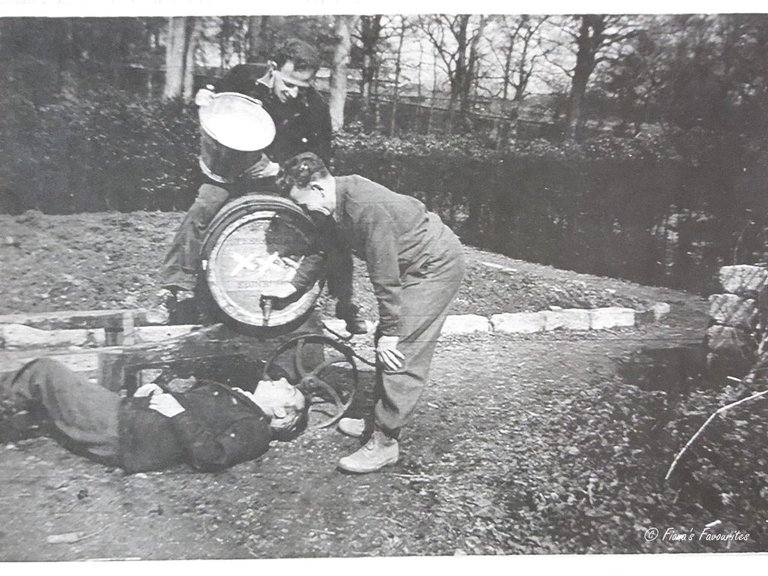
My father - the one under the keg tap - "busy" in Kew Gardens.
Consequently I grew up with vegetable peelings always saved for the compost heep. That compost fed the growing vegetables and flowers. Sustainble living was just how things were done. It didn't have a lable. Then.
Back to my mother: I think I've mentioned that she was one of four sisters with a single mother, and grew up in the Second World War.

Mum at about 12 - circa 1940
(Well, I had, and it's one of those posts I shall have to "reconstitute".) The point is, that every morsel had to stretch and nothing went to waste.
Both The Husband (whose parents were married during that same war) and I grew up with the concept of nose to tail eating and wasting no part of an animal. The Husband talks about his mother who, as a young mother newly arrived on a smallholding in the then Rhodesia, making soap with pig fat. And curing ham. Eating offal (which, by the way, includes oxtail), was just part of life. As were meals with leftover meals. Some more successful than others. Stovies was one we both remember. In our house stovies were always made after roast beef and was one of my Dad's favourite winter suppers. And, let me add he, himself, made a mean pot of stovies.
Patterns repeat
As much as one thinks one rebels against one's childhood, and "things our parents did", it sometimes comes as a bit of a shock to discover that we are repeating the same patterns. Or not. Anymore.
It's taken a while, and I've made peace with embraced some of those patterns. Like the compost heap. And leftovers. However, in my defence, I plan my leftovers. Like I plan the weekly meals. The "deliberate" leftovers are essential ingredients in another meal. As is the case with my roast vegetable "frittata".
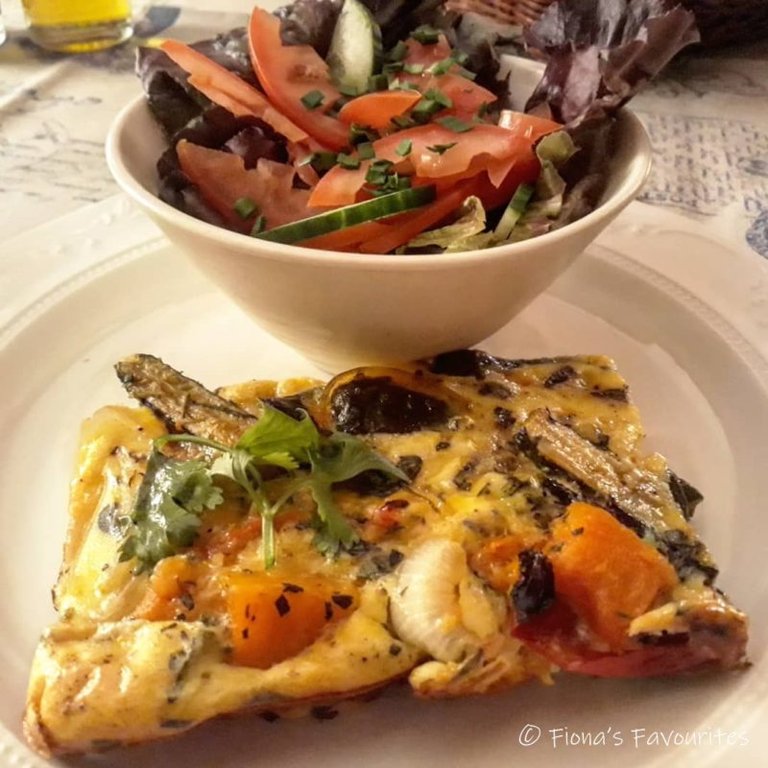
A while ago, I shared this photo on Instagram and a friend asked if I'd shared the recipe here. Well, I hadn't then, and I am, now.
Roast Vegetable Frittata
Essentially, this is a baked omelette. Roast vegetables is a favourite meal and I when do them, I make a huge quantity. There is so much one can do with roast vegetables: stir into pasta or risotto; as part of a salad and in a frittata. As I did for that particular evening's meal. It's simple and it's versatile. One can make it North African by adding harissa and garnishing it with fresh coriander or take it to the other side of the Mediterranean with pesto and basil. Or one can give it a Mexican touch with cumin, chilli and cilantro (or coriander and dhanya by other names). I will even add a bit of spinach as I did the other evening when I paid proper attention to what I was doing - to be able to write up the recipe.
This particular evening, I also had some left over spinach from another meal, and I had also roasted some cauliflower (which I usually keep separate because the flavour tends to "contaminate" everything else). I elected omit the cauliflower, but incorporate the spinach into this frittata.
This transformation of leftovers consists of a layer of roast vegetables in a greased baking dish, over which one pours beaten egg which is topped with grated cheese before being baked in the oven. The detailed recipe is here in a printable format).
The roasted cauliflower didn't go to waste, either, it went into the side salad that accompanied the meal.
A last word
This is the first of a few recipes-by-request which have taken a back seat to my lockdown related rants. So, keeping a promise, this one is for Janette who also writes about reinvention and sustainable living: under the milkwood tree in her garden which is on the beautiful Eastern Cape coast of South Africa. Go and have a read.
Until next time, be well
Fiona
The Sandbag House
McGregor, South Africa
Post Script
English writing and online tutoring services


writing - emails and reports, academic and white papers
formal grammar, spelling and punctuation
more information here
And then there's more:
- If this post might seem familiar, it's because I'm doing two things:
- If you’re interested in a soft entry into the world of crypto currency and monetising WordPress blog, use the fantastic Steempress plugin to post directly to the Hive blockchain. Click on the image below to sign up

- I also share the occasional post on Medium.
Posted from my WordPress blog with SteemPress : https://fionasfavourites.net/leftovers-when-they-are-not-leftover/
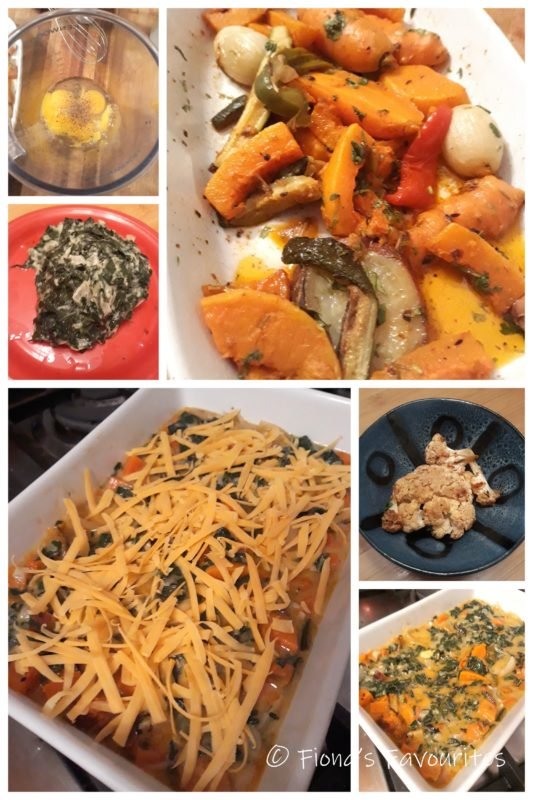
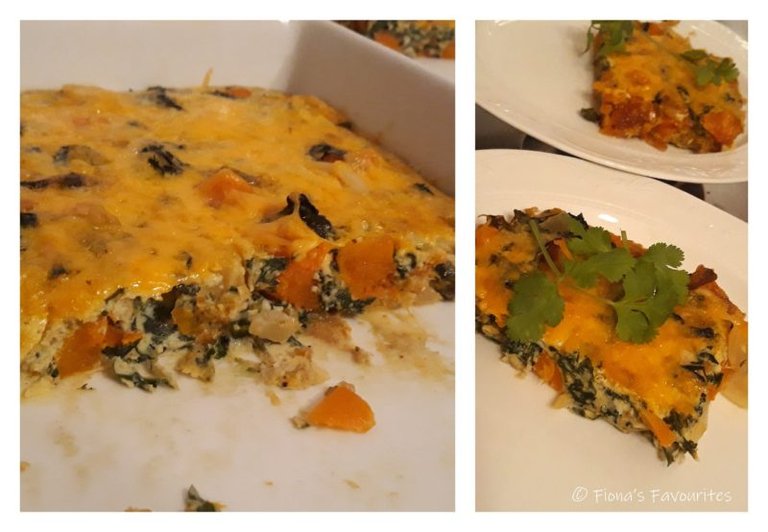
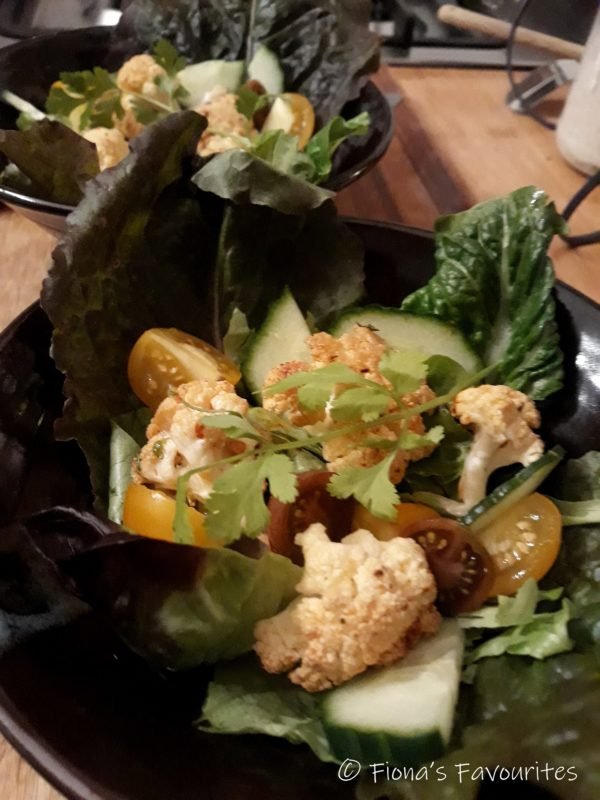

Thank you @fionasfavourites, for using the CO2 Compensation Coin (COCO) to reduce your CO2 footprint.
For the story, for the insight, for the recipe, for your effort...
Thank you!
@tipu curate
Upvoted 👌 (Mana: 0/4)
Much appreciated, thank you!
I think the Stovies you refer to is Scottish, we called it Bubble and Squeak (British), having a roast every Sunday lunchtime with all present and accounted for one evening meal would follow with Bubble and Squeak when/if there were left overs.
Only thing we seldom got was cabbage, Mum didn't enjoy it (I think it was a childhood thing with Scottish Mother). Roast was not a roast, including (chicken, beef or lamb) potatoes, roast onion, roast carrots, or gem squash, or pumpkin, boiled peas or beans when available, rice and gravy. Seasonal vegetables where supplied from a local farm in our village on the Westrand, now a school is on the land.
Whatever was served you ate, Dad cooked and served portions, planning the family meals with both parents working.
Life is different today and yet I loath not buying fresh still supporting local farmers.
The Roast Vegetable Frittata look simply delicious. Something to try now in winter.
Yes, Stovies are Scottish and having an English mum and a Scottish Dad, I can tell you that they are very different. Stovies is a stew/casserole and made in a saucepan. Bubble & squeak in a pan, fried to make a crusty bottom and yes, with cabbage. So not one of my favourites. We rarely had it. When we did, I hated it, hahaha!
Life is very different, but in some ways, because of where we live, not so much!
Let me know how the frittata turns out?
That looks really good @fionasfavourites, it's quite surprising what one can put together with leftovers and roast veg would make this a delicious frittata!
I think lockdown has made many of us even more aware of how many hungry people there are in this world of ours, and there are many many more nowadays! I actually feel guilty throwing away leftovers; we'll have it the next day for lunch or I'll pass it on to my domestic worker, she loves having a takeaway container for her supper. But now that she's still not back after lockdown, I've been scooping it into empty yogurt containers but it's such a mish mash that I don't think anyone will want to eat it! Those containers are now piling up in the freezer and I need to put it out with the garbage on Friday or give it to someone with dogs, just hate the idea of wasting! The birds and the monkeys share the fruit peelings and the bread crusts. I think our parents drummed it into us not to waste!
Have you considered putting the leftovers out for homeless people and the garbage pickers? I used to put food on top of the wheelie bin when we lived in Cape Town.
I have done that before but we haven't seen any garbage pickers since lockdown but sure they will be back now as we see more people walking past now. That stuff will go out tomorrow!